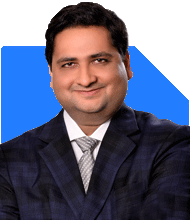Hi Experts,
I seek your guidance on my mutual fund portfolio. Below are the details:
Total Portfolio Details:
- Total Invested Amount: ?15,76,159
- Current Value: ?19,35,234
- Total Returns: ?3,59,075 (+22.78%)
- XIRR: 20.75%
Monthly SIP Contribution: ?1,18,000
Breakdown of monthly SIP contributions across funds:
1. Parag Parikh Flexi Cap Fund Direct Growth – ?30,000
2. SBI Large & Midcap Fund Direct Plan Growth – ?15,000
3. SBI Magnum Mid Cap Fund Direct Plan Growth – ?20,000
4. Nippon India Large Cap Fund Direct Growth – ?30,000
5. Nippon India Small Cap Fund Direct Growth – ?7,500
6. ICICI Prudential Technology Direct Plan Growth – ?10,000
7. Quant Small Cap Fund Direct Plan Growth – ?7,500
8. HSBC Small Cap Fund Direct Growth – ?5,000
9. Edelweiss US Technology Equity Fund of Funds Direct Growth – ?5,000
Can you suggest if I am on track to create 5 CR corpus in 10 years
Thank you!
Ans: Your portfolio and SIP contributions demonstrate disciplined financial planning. Let’s review your current status and provide actionable recommendations to stay on track.
1. Review of Your Current Portfolio Performance
Total invested amount: Rs 15,76,159.
Current portfolio value: Rs 19,35,234.
Total returns: Rs 3,59,075 (+22.78%).
XIRR of 20.75% reflects impressive performance so far.
Your portfolio is generating excellent returns. It aligns with long-term wealth creation goals.
2. Assessing Your Goal to Achieve Rs 5 Crore
You have a 10-year horizon to create Rs 5 crore.
A disciplined Rs 1,18,000 SIP contribution is a solid start.
Assuming consistent performance, you are on track to achieve your goal.
However, fund selection, market performance, and taxation can affect final corpus.
3. Diversification and Allocation Insights
Your portfolio includes diverse categories, such as large caps, mid caps, small caps, technology funds, and international exposure.
Strengths in Your Portfolio
Good mix of growth-oriented funds like flexi cap and small-cap categories.
Exposure to international markets provides diversification benefits.
High SIP allocation ensures consistent investment.
Areas of Concern
High allocation to small-cap funds may increase portfolio volatility.
Technology funds carry sector-specific risks, especially during downturns.
Overlap between funds can lead to redundancy and reduced efficiency.
4. Disadvantages of Direct Funds
Why Relying Solely on Direct Funds May Not Be Ideal
Direct funds require active tracking and market knowledge.
Lack of expert guidance may lead to suboptimal fund choices.
Regular funds through a Certified Financial Planner provide tailored advice.
Switching to regular plans ensures professional monitoring and better goal alignment.
5. Impact of Taxation on Your Portfolio
Equity Funds
Long-term capital gains (LTCG) above Rs 1.25 lakh are taxed at 12.5%.
Short-term capital gains (STCG) are taxed at 20%.
Debt-Oriented Funds
Gains are taxed as per your income slab.
Tax implications reduce the effective corpus if not planned wisely.
6. Recommendations to Strengthen Your Portfolio
Reduce Concentration in Small-Cap Funds
Small caps are high-risk and better suited for moderate allocation.
Shift a portion to balanced or large-cap funds for stability.
Limit Sector-Specific Exposure
Technology funds are subject to cyclical risks.
Rebalance to include broader thematic or diversified funds.
Consolidate Overlapping Funds
Too many funds increase complexity and overlap.
Streamline by reducing redundant schemes.
Focus on Active Fund Management
Actively managed funds tend to outperform in dynamic markets.
Certified Financial Planners can help optimise fund selection.
7. Strategy to Achieve Rs 5 Crore
Step 1: Increase SIP Gradually
Increase SIP contribution by 5–10% annually.
Align increases with salary hikes or bonuses.
Step 2: Stick to Asset Allocation
Maintain a balance between equity and debt based on risk tolerance.
Review allocation every 12–18 months.
Step 3: Reinvest for Compounding
Reinvest gains to maximise compounding benefits.
Avoid frequent withdrawals unless necessary.
Step 4: Regular Portfolio Review
Assess performance semi-annually or annually.
Adjust based on market conditions and goal progress.
8. Emergency Fund and Insurance Coverage
Maintain 6–12 months’ expenses as an emergency fund.
Ensure adequate health and life insurance coverage.
Avoid using mutual fund corpus for emergencies.
9. Long-Term Focus for Financial Independence
Stick to your SIP plan despite market fluctuations.
Focus on disciplined investing and goal alignment.
Seek professional advice to handle market uncertainties.
Final Insights
Your portfolio is well-structured and performing well. However, some adjustments can optimise returns and reduce risks. Focus on diversification, reduce overlapping funds, and seek guidance from a Certified Financial Planner. With discipline and regular reviews, you are well on track to achieve Rs 5 crore in 10 years.
Best Regards,
K. Ramalingam, MBA, CFP,
Chief Financial Planner,
www.holisticinvestment.in
https://www.youtube.com/@HolisticInvestment

























